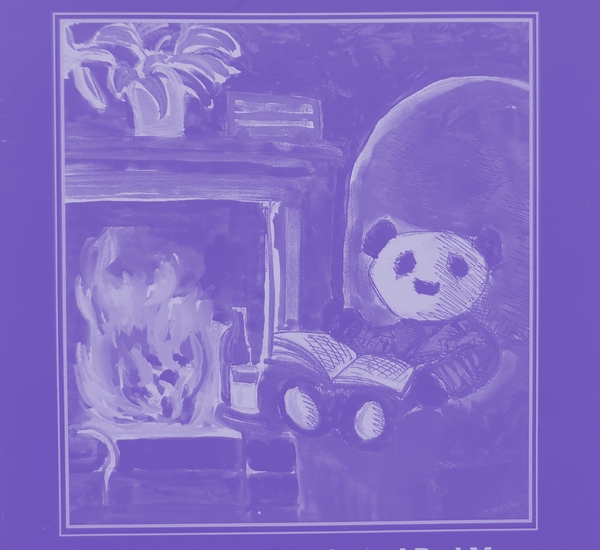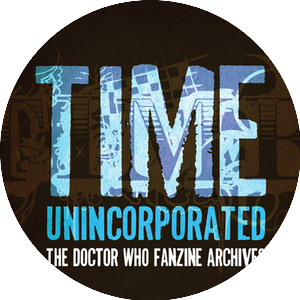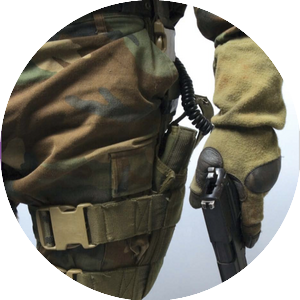Motivation
Obverse Books came into being in 2008 when Stuart Douglas decided the best way to get new Iris Wildthyme stories to read was to commissioned them himself. I was on a couple of forums with Stuart , so I already knew him and knew he was a big fan of my work. When he announced that he was looking for submissions for Obverse’s first Iris Wildthyme collection, I was fairly confident I could get a story accepted. What I didn’t think I could do was come up with an Iris Wildthyme story.
For fiction, primarily what I look for in a submission breaks down into three things - evidence of past formal writing (proves that the person can write to a deadline), examples of writing that I liked (proves that the person can write to a standard I want) and example of a good, properly thought out idea (proves they have not just thought of a cool image and think it deserves a story).
The last is probably the most important - for every open subs slot I announce, at least half of the pitches consist of variations on ‘A does this thing and iris fixes it’. I need far more detail than that.
At that point, I’d only read one story with Iris in it – the Doctor Who book The Scarlet Empress. I liked the book, but it was a long time since I’d read it and it didn’t really give me any clues about what Iris was like when she was the star. I passed on the chance to propose anything, but Stuart is a friend and so of course I wanted to give him my support: I bought a copy of The Celestial Omnibus and read it fairly soon after. And became hooked almost immediately. I discovered that Iris was not only a character I probably could write for, she was one I definitely wanted to write for.
When Stuart announced that the collection had been successful enough for him to be looking for stories for a follow-up, I knew I had to be in it.
Inspiration
At the time, I’d been doing a lot of research into Manchester history: this was partly for a novel that never came to anything, but also out of a general passion for the subject. In particular, I wanted to put Iris into Canal Street at the height of Manchester’s gang problems: the gay area of Manchester had thrived through the 80s and 90s whilst everywhere else had been caught in the crossfire between Moss Side and Salford, partly because the gangs had been too homophobic to set foot there. It seemed like a good fit for Iris, somehow.
The theme of the book was horror, so I needed an idea that at least pretended to be horrific. I was also aware that I didn’t know Iris quite as well as I would have liked, and so the idea of writing something from the perspective of a character who had only a tangential understanding of her would help disguise my own ignorance. There was perhaps more than a little of the Doctor Who episode Love and Monsters in the final idea, but if there was it wasn’t intentional.
Getting the Story
I wrote a synopsis to pitch to Stuart in July 2009, which had the main points the story nailed down: the main character received notes from his future warning about the coming of Iris, and the final reveal was also there. I had just finished a story for Shelf Life, an anthology in memory of Craig Hinton: I named the lead character in the proposal Craig as a very minor tribute to him. As the story developed, I realised that the lead character wasn’t exactly a nice person to be associated with, and his name changed to something else. I still owe Craggles a cameo.
The Pitch
The idea was emailed to Stuart, and he responded enthusiastically almost immediately.
Approaching the first Iris collection, I had an actual (Word doc) list with authors I would love to get but who I couldn’t afford, authors I would love to get and hopefully could, and authors who I’d like to read more by. You fitted in right at the top of lists B and C - what I remember primarily is that I loved your stories in that Canadian Who fiction mag - given that little bit more scope for spreading your wings that writing non-officially provides, you really went for it and wrote unusual, moving stories which never settled for the obvious.
Editorial
As the story was written up, the original intention to have it set very much in the real historic Canal Street went out of the window: the story became clearer, and it was pretty obvious there was no way to bring history into it. Instead, the opening scenes were set in the Canal Street I knew from working there in the 90s, and then quickly focused on the lead and his quest for the Fag Hag From Hell.
I sent the story off, and in November Stuart got in touch with his thoughts on it. There weren’t many changes – there was the odd bit of business that needed clarifying, and another couple of amendments that were less clear cut. Both involved the lead character making bitchy comments about other characters in the story that – completely by accident – looked like they might be directed at real people. The first was resolved by renaming a minor character, but the second ended up with the line being removed completely.
It was a delicate situation. There are people I would happily libel in my writing without a second thought, but that wasn’t what was going on here. This was the lead character demonstrating that was not intended to be a likeable person, and that his views on Iris and her behaviour had to be seen through that filter. At the end of the day, there was absolutely no point in printing a line that someone tangentially connected to the world of Iris might think was a deliberate criticism of them, and I supported the decision to remove it. But I do think it weakened the story a little, and I still think I should have tried harder to find an alternative wording that got the original intention across.
What Happened Next?
The collection was released in December 2009, and went down pretty well. Personally, it started my working relationship with Obverse Books, who have since become the publisher I have written the most for.
It was a pleasure to publish you in the ‘Panda Book of Horror’ and then several times since, leading up to the longer work you’re doing for Obverse now. I can honestly say that I have never read anything by you which I did not consider exceptional, and look forward to working with you more in future.
But at the time, it felt more like an end than a beginning: the next month, my daughter was born early and gave me the first of very many sleepless nights. The time I had available for writing reduced to practically zero, and – knowing this – Stuart didn’t even consider asking me to contribute to the next few Iris collections.
As things settled down later, I did think that I might manage a short story, and submitted an idea for the Iris Abroad collection. But I submitted in the open submission slot, which was the last Stuart had to fill and he was understandably uncomfortable about having the “new voice” he found through the open submission call being an established writer who had already been publish by Obverse. It did let him know that I was edging back into circulation, however. Throughout the two years where I could barely get 1000 words a week on paper, it was usually Obverse short stories I was writing. They gave me the lifeline that let me keep thinking of myself as a writer, and when I started to think I might be able to try something full length again, it was Obverse who made the first offer. I am eternally grateful.


